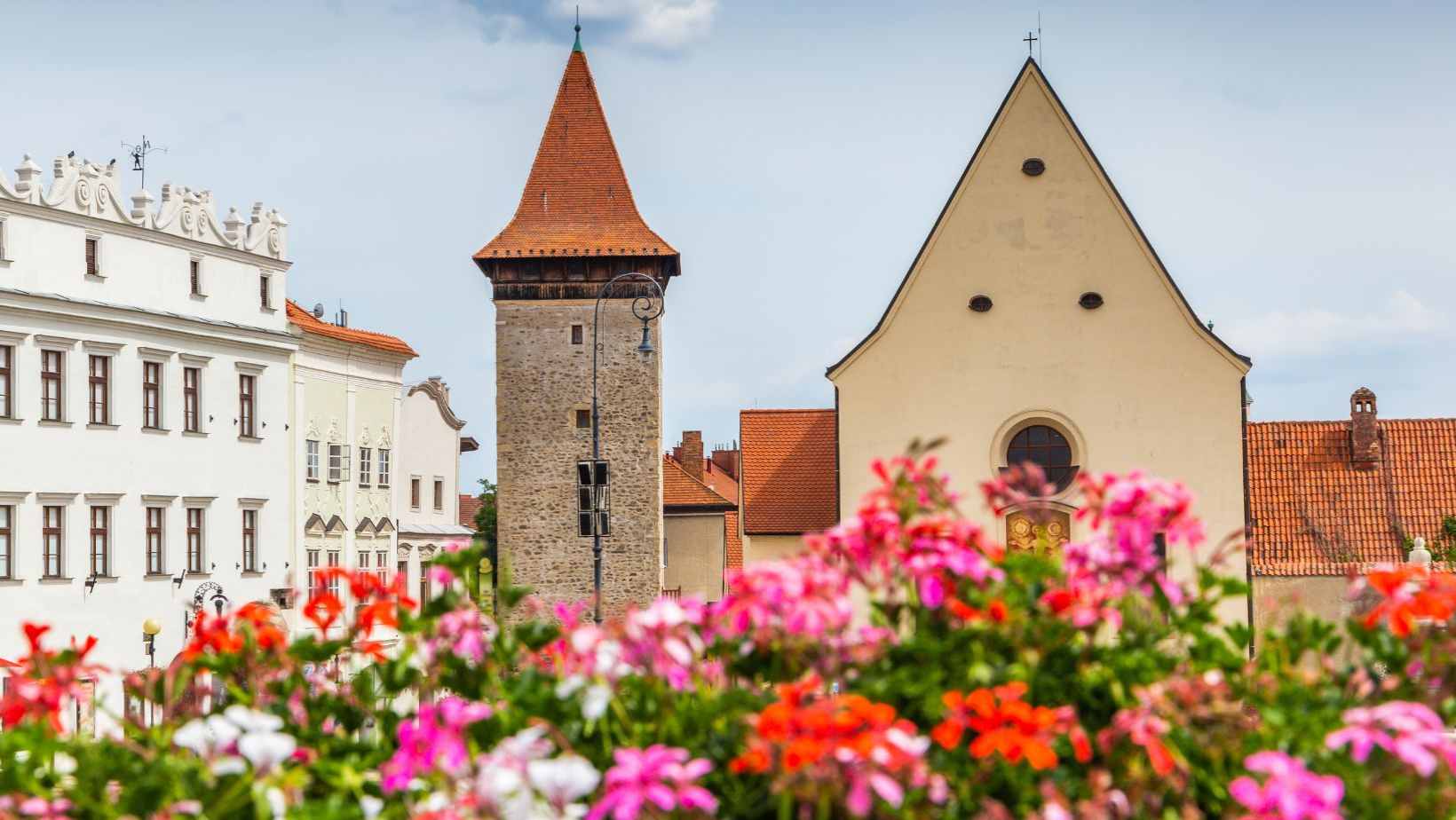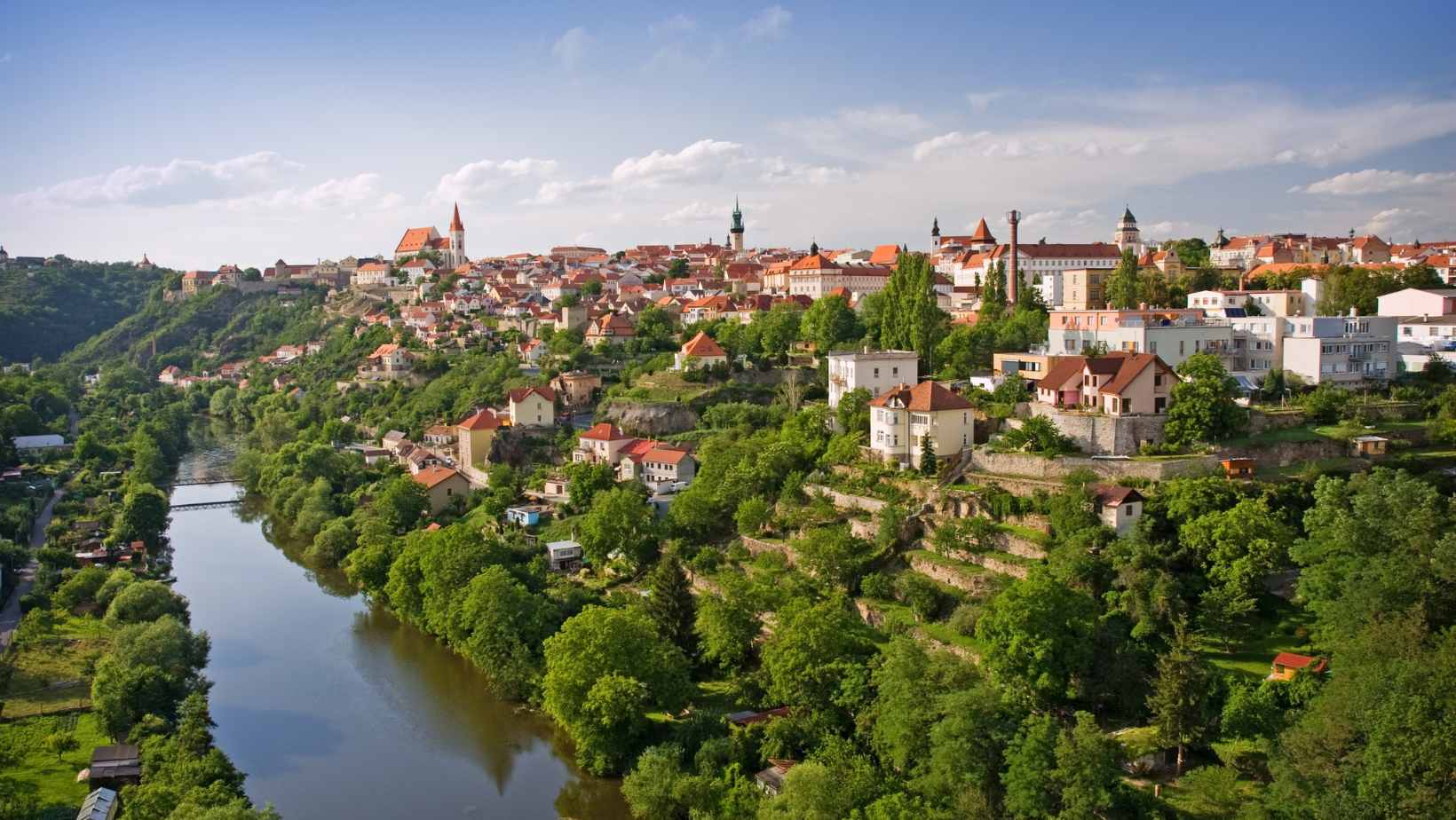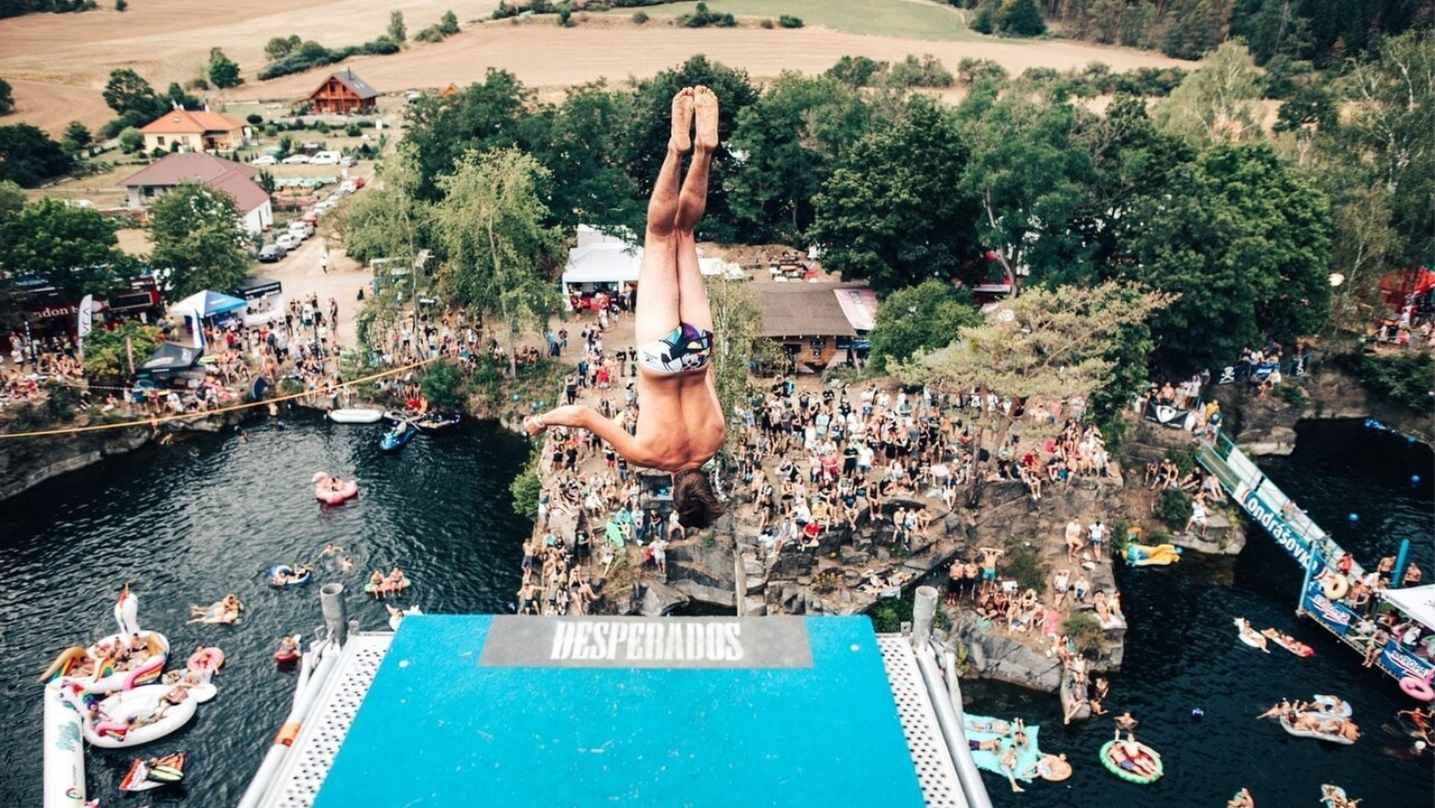When it comes to responding positively to gluttony, it doesn’t matter what anyone says: (almost) everyone loves fried desserts.
That’s why we’re sharing the ranking from the Taste Atlas platform.
In the ranking of the well-known “Taste Atlas” platform, there are two Czech desserts that stand out in the world’s top 20. Is your mouth watering? So let’s find out what they are.
Sharing the 7th spot with several other countries, the Czech Republic’s fluffy doughnuts (koblihy), are traditionally filled with various types of jam.
Additionally, Czech muffins (vdolky) secured the 20th spot. These typical sweets are round with a small hole in the center for the filling, which can include jam, cottage cheese, or whipped cream. Although they can be baked, they are more commonly fried in oil.
According to Taste Atlas, which published a list of a hundred fried desserts, this is the top 20:
- Polish donuts (Pączki)
- Bomboloni (Tuscany, Italy)
- Pisang goreng (Indonesia)
- Graffe Napoletane (Naples, Italy)
- Aborrajados (Colombia)
- Fouskakia (Alonissos, Greece)
- Krapfen (Austria) – Koblihy in Czechia
- Malassadas (Azores, Portugal)
- Bola de Berlim (Portugal)
- Nonnevot (Limburg, Netherlands)
- Papanasi (Romania)
- Sfenj (Morocco)
- Bambalouni (Tunisia)
- Quarkkeulchen (Germany)
- Odading (Indonesia)
- Beignets (France)
- Quarklchen (Germany)
- Turon (Philippines)
- Zeppole (Italy)
- Vdolky (Czechia)
Would you like us to write about your business? Find out more
The historic town centre with its numerous churches, all surrounded by medieval city walls, has preserved its Renaissance look and is full of crooked lanes, romantic views and picturesque nooks and crannies.
Znojmo is also the centre of a well-known wine region, so why not take the time to sample some of the local produce?
Nestled between Austria and Slovakia, this region boasts grand castles, distinctive cuisine, and sprawling vineyards that have earned it the moniker “Moravian Tuscany.”
Despite the convenience of an international airport in Brno, South Moravia welcomed just over 690,300 overseas tourists last year, compared to Prague’s 5.8 million. The crowd-free charm of Znojmo, founded around 1226 by King Ottokar I of Bohemia, is home to 34,000 residents and is a mere two-and-a-half-hour drive from the capital.
Znojmo’s affordability adds to its appeal. Four-star hotel rooms are available for less than 1,500 CZK a night, and attractions are reasonably priced – adult entry to the tunnels starts from 100 CZK.
Dating back to the 14th century, the labyrinthine tunnels of Znojmo offered refuge during wars and unrest, later serving as storage space. Over centuries, these passageways and cellars expanded to span 27 kilometers. Largely forgotten or kept secret until the Second World War, they were exposed after bombing raids and subsequently rebuilt.

Today, these tunnels are a major tourist attraction, offering classic sightseeing routes and “adrenaline trails” of varying difficulty. Above ground, a journey through Znojmo’s history and modern culture is incomplete without sampling local cuisine.
ReZtaurace, a microbrewery in the grounds of Znojmo Castle, serves as an ideal venue. Here, you can enjoy fragrant beef broth and wild garlic soup for 60 CZK, followed by beef tenderloin with dumplings for 200 CZK. The venue is a local favorite, with a bustling beer garden offering views of the lush valley below.
In the evening, Enoteka, a former brewery turned wine bar, offers a relaxed setting to explore over 120 wines. Prices range from 12 CZK per small sample to 80 CZK for a glass.

Nature enthusiasts will find South Moravia’s greatest splendor in Podyjí National Park. Spanning 63 square kilometers, the park includes flood plains, the river Dyje, and forests that provide a habitat for species such as otters, beavers, wild boars, and the black stork.
An e-bike ride through the park, reveals landscapes reminiscent of the Alps in summer, dotted with poppies and fragrant elderflowers.
Along the route, former Soviet watchtowers have been transformed into viewing platforms overlooking vineyards. A stop at Šobes Vineyard in the heart of the park offers a taste of its produce, benefiting from a unique microclimate. A glass of dry Riesling costs about 20 CZK, a refreshing reward after a four-hour cycle.
Would you like us to write about your business? Find out more
The Highjump event, celebrating its 25th anniversary this year, will take place at the Hřiměždice quarry near Příbram on August 2 and 3.
Visitors will enjoy performances by water jumpers from around the world, a rich music program, and plenty of entertainment. Tickets are still available here.
Highjump stands out for its unique atmosphere and venue. As always, there will be several categories to compete in. Participants will dive from 12- and 16-meter high towers. A major highlight will be the splash-diving competition, where the winner is determined by who creates the biggest splash.
The organizers have prepared a captivating musical lineup across several stages.
The main acts include rapper Yzomandias, rising star Rohony, rapper Rest with the band Champion Sound, legends PSH, singer 7krát3 with a live band, and DJs Matamar, TK27, Magenta, Roxtar, and many others.

On Friday and Saturday, visitors can look forward to performances by Yzomandias from the Milion+ label and the popular Rohony.
PSH, consisting of Orion, Vladimir 518, and DJ Mike Trafik, will deliver their usual outstanding performance. Rapper Rest, a hit last year, returns this year with the live band Champion Sound, fresh from their victory at the Red Bull Soundclash. Also performing will be singer 7krát3 with a live band, and ska-punk fans can enjoy the band Sticks.
The Desperados Dance Stage will feature top domestic DJs.

Located right behind the jump tower and a zone where visitors can enjoy Desperados tequila-infused beer, this stage will showcase acts such as the duo Matamar, DJ Roxtar, Chris Sadler, previous Desperados DJ competition winners Viiito and Saxofrancis, and the current winner Theresia.
Would you like us to write about your business? Find out more
The ongoing reconstruction of the Holešovice Market will gradually transform it into an attractive, modern space.
Renovations will impact all the halls, including the historic former slaughterhouse exchange building, which will regain its original Neo-Renaissance appearance. The site will be completely revitalized, ready to welcome visitors and new tenants.
Built between 1893 and 1895 by architect Josef Srdínek, the market served as the Central Slaughterhouse of the Royal City of Prague until 1983. It then became a general market and was declared a cultural monument after ten years. However, it was in poor condition, necessitating a reconstruction.
“The Holešovice Market is entering a new phase, but we’re still at the beginning. Renovating the halls, which are mostly in disrepair, will require billions. We can’t change everything at once, though the entire area deserves it. All halls will be fully reconstructed gradually. Current modifications include replacing the boiler in Halls 7, 8, and 9, home to Jatka78 and Alza, and modernizing the technical infrastructure,” says municipal councillor Adam Zábranský.

The former Slaughterhouse Exchange building has been undergoing extensive reconstruction since last year to restore its Neo-Renaissance look.
The work, expected to be completed in spring 2025 at a cost of up to CZK 200 million, includes repairs to the roof, electrical and water systems, air conditioning, and underfloor heating.
“The exchange building revealed a unique feature of its time—underfloor heating, which is surprising given the technology in 1895,” says Tomáš Hübl, chairman of the board of directors of Výstaviště Praha. “The building hides many historical elements, which are being preserved. One significant element is the statue of Mercury, which will be visible to the public.”

Since May, Halls 27 and 28 have been under reconstruction. Visitors can expect new businesses from the well-known company Ambiente. Halls 7, 8, and 9, housing Jatka78 and Alza, are still awaiting their transformation.
These halls are undergoing regular repairs and maintenance, with plans to modernize the boiler rooms at a cost of CZK 35 million. Additionally, the intermediate area of the market will be improved according to the Perspektiv studio’s winning concept, enhancing surfaces and technical infrastructure.

Next year, the Holešovice Market, a cultural landmark, will celebrate 130 years. If all goes according to plan, it will open two new halls and the former slaughterhouse exchange building to visitors.
Would you like us to write about your business? Find out more
The Czech Education Minister, Mikuláš Bek (STAN) proposed that all children start learning the English language from the first grade.
This reform has been three years in the making and is now approaching its final stage, with both the Education Ministry leadership and coalition politicians focusing on it.
The main goal of this reform is to shift from rote memorization to understanding context and the practical application of knowledge and skills.
English from Kindergarten?
Minister Bek has confirmed that primary school children will still be required to learn two foreign languages. He shared on social network X that English might become compulsory from the last year of kindergarten.
“English compulsory from Grade 1, maybe from the last year of kindergarten,” Bek stated. “A second language compulsory from Grade 6, schools would have to offer at least one of a choice of German, French, and Spanish.”
This marks a change from the original plan, which proposed only one compulsory foreign language in primary schools, with the second language being optional.
Currently, schools must start teaching the first foreign language by third grade at the latest, and the second by eighth grade or earlier.
Decision Process
“We are clarifying our views and positions, but at the moment no decision has been made,” said MP Jan Berki (STAN).
The coalition includes supporters of both the current system of compulsory two-language teaching and the option of one compulsory language with the other being offered as an elective.
Changes to Arts Education?
Beyond foreign languages, there’s a significant debate about the future of music and art education as part of the broader education reform.
It’s still unclear whether these subjects will be taught as before or integrated into broader disciplines that include film, dance, and drama.
Would you like us to write about your business? Find out more
The Prague City Council has approved the Programme of Support for the Activities of National Minorities and Integration of Foreigners in the Capital City for 2025.
A total of CZK 28 million will be allocated to the program, with applications open to non-profit organisations and municipal districts from September 30 to October 14 this year.
This new program aims to support activities related to national minorities from late September to mid-October. Non-profit organisations and city districts can apply to implement projects that help preserve cultural traditions and languages of national minorities.
These projects also aim to raise awareness among the general public by showcasing minority cultures. Many initiatives focus on educational activities for children, young people, and adults.
These include cultural events like concerts, exhibitions, theatre performances, festivals, lectures, conferences, seminars, and round table discussions.
Deputy Mayor Jiří Pospíšil expressed his enthusiasm for the program, stating, “I am glad that Prague will continue to support national minorities and the integration of foreigners living in our city. We have allocated 28 million crowns for these activities for 2025. We have also unified the programs to support these areas, which will simplify their administration and increase their efficiency. The program includes cultural, social, and educational activities that help to preserve the cultural traditions of minorities and support the integration of foreigners, including Ukrainian refugees.”
The program consists of several measures:
Measure I: Presenting national cultures in Prague.
Measure II: Creating publications and audio/video recordings about the relationship of national minorities to Prague.
Measure III: Ongoing activities showcasing the culture of national minorities in Prague.
Measure IV: Supporting the integration of foreigners in Prague.
Measure V: Publications and audio/video recordings related to the integration of foreigners in Prague.
Measure VI: Supporting activities of foreign organisations and initiatives that promote civic engagement and integration of foreigners.
Applications for funding can be submitted from September 30 to October 14, 2024. Detailed information will be available on the official Prague website, praha.eu
Would you like us to write about your business? Find out more
Premium and luxury brands, primarily targeting Prague’s high street, lead the way. Health and Beauty and F&B come to the fore this year.
Twenty brands debuted on the Czech retail market between January and the end of June, the highest ever recorded in the first six months of a year.
The biggest categories were Health and Beauty (six brands) and F&B (five brands). All but one of the new brands opened in Prague, the other setting up shop in an outlet centre in the Moravian town of Hatě.
Balmain Hair Couture, Parfums Christian Dior, and Le Labo – the only new entrants in the luxury segment – were the most noteworthy arrivals on the Czech market in the first half of the year. They were joined in the cosmetics section by Sister’s Aroma from Ukraine and Spa Ceylon from Sri Lanka.
F&B chains opening here were Slovak fast food company Amerikanos, Ukraine’s fine-dining Nai, The Box Donut from Hungary, Turkish confectioner Malatya Pazari, and bubble tea vendor Makamaka, which replaced Taiwan’s Chatime on the local market.
The most eagerly awaited F&B launch this year is undeniably the US fast food brand Five Guys, which is expected to open its first branch in the newly opened Máj shopping centre on Národní Avenue in Prague.
Its counterpoint, offering a range of healthy meals and salads, will be dean&david, which will also be setting up its first location in the Máj shopping centre, but will face competition later this year from SKA, the Georgia-based healthy snack chain operating out of the Quadrio shopping centre next door. Before that, SKA is opening its first branch in Kaprova Street in Prague.
Fashion brands have been underrepresented so far. Premium Italian fashion brand Bikkembergs and France’s Danyberd have now entered the Czech market.
In the Accessories sector, Eyerim – the Slovak eyewear brand – has opened its first shop in Karlín. In Electronics, there are two new brands: MIA Dynamics (American electric scooters) and DJI, which opened its first flagship DJI drone shop in Masaryčka. IEM Spa, the Slovak beauty clinic, has also opened its first branch in this office development.
In the Leisure and Entertainment segment, Europa Experience – part of a network of visitor centres offering young people and adults a unique insight into the workings of the European Union – opened in Palác Dunaj in Prague.
Westfield Chodov now has a branch of the TUI travel agency. Furniture is represented by Spain’s Kave Home, bathroom accessories by the premium Austrian brand Vossen.
Would you like us to write about your business? Find out more
Prague residents seeking peace and quiet at night will soon get their wish.
A ban on cars and taxis at night in parts of Prague’s Old Town district will come into force on Wednesday or Thursday, Prague 1 city councillor Vojtěch Ryvola told the Czech News Agency.
This comes after a previous attempt to implement a similar ban last November was overturned by the city’s Department of Roads.
Last year’s attempt involved the installation of signs prohibiting non-essential traffic entry between 10:00 PM and 6:00 AM in an area bordered by Dvořák Embankment, Pařížská Street, Old Town Square, and Revoluční Street.
The goal was to address long-standing noise complaints from residents, particularly those living on Dlouhá Street, known for its concentration of late-night establishments.
Ryvola confirmed that the new proposal has been discussed with the city’s transportation director and adjusted based on their feedback.
He said the ban mainly targets the young people who like to drive around the Old Town in powerful cars at night, or hold races in the vicinity of Dlouha.
The measure gives the city police a tool to launch systematic checks and start issuing fines to those who see night trips to the historic centre as just a frolic.
Would you like us to write about your business? Find out more
The international festival of new circus and theatre, Letní Letná 2024, will take place in Prague from August 14 to September 1.
The festival will feature over 200 performances, workshops, concerts, and various acts by circus artists from 14 countries, including a special program for children.
This year marks the twenty-first edition of the festival. Letenské sady park will once again be the main venue, with tents set up to create a mini-town complete with a coffee shop and an evening bar.

Many performances will be free of charge. Additionally, the festival will offer a rich and varied daily program: children’s shows, circus, juggling and acrobat workshops, music concerts, exhibitions, lectures, creative workshops, and more.
For detailed event schedules and a list of participants, visit the festival’s official website.

The festival kicks off on Wednesday, August 14, with two free events:
- At 19:00, a concert by circus musicians DJ GADJO CZ.
- At 20:45, performance by the circus troupe AKOREACRO.
The new circus, a genre of stage art that emerged in France in the 1970s, blends traditional circus elements with other forms of art to create conceptual productions.
This genre is now flourishing in Germany, France, Scandinavia, the Netherlands, and Canada. The most famous representative of the genre, Cirque du Soleil, originated in Canada.

Would you like us to write about your business? Find out more
Prague has been named the best region to live in the Czech Republic for 2024, while the Karlovy Vary Region is the worst.
This conclusion comes from the Místo pro život study, conducted annually by the Datank analytical agency.
The ranking was compiled using statistics from official agencies and ministries, and the results of a survey of 1,600 residents in each region.
Indicators such as unemployment, salary levels, purchasing power, security, environment, access to medical and social assistance, educational opportunities, infrastructure, and tourism were considered.
A total of 75 criteria were evaluated, divided into 8 key areas of life.
Prague emerged as the winner for the third consecutive year, boasting the highest average salary, the highest concentration of doctors and dentists, and the highest life expectancy for both men and women.
The capital also excels in infrastructure, with the highest per capita capacity of sewage treatment plants, the largest proportion of households with Internet access, and the most public electric vehicle charging stations per 1,000 kilometers of road.
Prague has the highest proportion of foreigners and a very high voter turnout. However, the study notes a need for improvement in environmental areas, specifically the low amount of recycled waste per capita.
The South Moravian Region secured second place, thanks to high attendance at cultural events, low air pollution, a low share of cars per inhabitant, a high percentage of households connected to sewerage, and low unemployment among women.
The Hradec Kralove Region took third place, with a high rate of solving criminal offenses, many vacant places in primary schools and kindergartens, the highest percentage of cultural events per 100,000 inhabitants in the Czech Republic, and the lowest youth unemployment rate.
Would you like us to write about your business? Find out more
The St. Nicholas City Bell Tower stands right next to the Church of St. Nicholas in Malostranské náměstí and has played an irreplaceable role in Prague.
It was from it that the loud bell that announced fires rang out into the wide surroundings. Today, it offers visitors information from ancient history and a magnificent view of the wide surroundings of old Prague.
The construction of the St. Nicholas Town Bell Tower began in 1739, as did the adjacent St. Nicholas Church.
Although many visitors associate the bell tower with the Baroque church next door, it never belonged to that church and has always been a town property, not a church property.
It takes a while to climb the stairs. After all, there are almost 300 steps, which are variously arched, curved and high. You can rest on the individual floors where there are interesting exhibitions, such as the tower master’s apartment, which remains authentic.
“When a tourist comes here, he has the whole city in the palm of his hand – there’s a view of the Petřín lookout tower on one side, a little bit of Prague Castle, but there’s also an unprecedented view of Charles Bridge and the two bridge towers. This is really unique,” Barbora Scherf, spokesperson for Prague City Tourism, explains.
It was built for the good of the city, to protect it from fires, but actually over the centuries, especially in the 1920s, it was first abused by the totalitarian Nazis and then by the communists.
When visitors climb to the very top of the St. Nicholas town bell tower, they find themselves in a bygone and unforgiving time.
This is where the observation room of the State Secret Security used to be, monitoring the surrounding embassies (notably the American, German, and British ones).
Back in the Communist days, many were fully aware of the church tower being used by the StB, one reason why dissidents in the underground movement, sometimes met at its base, where they exchanged illegally published documents or books and where they knew they couldn’t be seen.
It was known that there was an observation point there used by the StB, so sometimes dissidents met right below, where they knew they couldn’t be seen. In that way, they managed to exchange illegal literature.
Such towers played a key role in secret police surveillance. One of the more infamous was opposite the house of Vaclav Havel, a leading dissident during communism who became Czechoslovakia’s first post-communist president, then president of the Czech Republic from 1993 to 2002 after Czechoslovakia split.
Would you like us to write about your business? Find out more
In June, the Czech Republic experienced the largest annual drop in food prices across the European Union, with a notable 4.8% decrease.
Hungary, which came in second, recorded a reduction of just over two percent. However, data from the Czech Statistical Office suggests this trend may not last. Future food price reductions will largely depend on harvest outcomes, with the extent of decreases expected to diminish.
Dominik Rusinko, an analyst at ČSOB, highlighted that the Czech Republic continues to lead in food price reductions, contributing to an unexpected decline in overall inflation.
“Food prices only decreased in five EU countries, with an average increase of 1.3% year-over-year across the EU,” Rusinko explained. This sharp decrease in food prices has played a significant role in reducing the nation’s overall inflation rate.
Despite agricultural producer prices being down 7.5% year-over-year in June, there was a 1.9% month-over-month increase. For example, fresh vegetable prices rose by 13.3% compared to May, poultry by 3.5%, and pork by 0.3%. Egg prices fell by 4.5%. These mixed signals suggest that the positive trend in food prices may not persist.
“In the second half of the year, the deflationary impact of food prices on overall consumer inflation will gradually fade, leading us to expect a slight increase in inflation to around three percent by year’s end,” Rusinko said. The month-over-month inflation rate in June was two percent.
According to Petr Dufek, Chief Economist at Creditas, the development of food prices will depend on the harvest.
“If it is favorable, fears of food prices will probably prove false,” he said. However, problems could arise with fruit, which will not be in abundance this year due to the weather.

